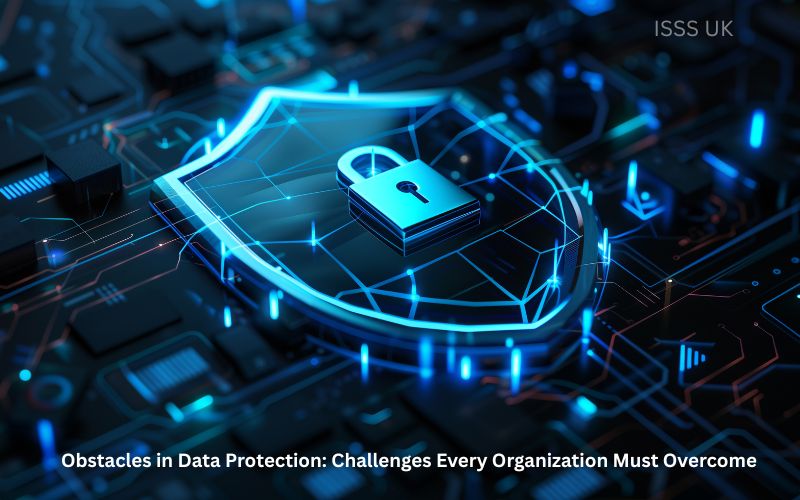In today’s hyper-connected digital world, data is the new currency—and protecting it has never been more crucial. As businesses collect, store, and process massive volumes of sensitive information, the need for robust data protection strategies becomes a core priority. However, safeguarding data isn’t without its challenges.
This article explores the key obstacles in data protection that organizations face, and why overcoming them is essential to ensure trust, compliance, and business continuity.
📌 1. The Explosion of Data Volume
Modern organizations generate and store exponentially growing data from multiple sources—IoT devices, customer interactions, remote teams, and cloud services.
🔻 The Challenge:
- Difficult to identify and classify sensitive data.
- More data = more entry points for potential breaches.
- Limited visibility into data spread across hybrid or multi-cloud environments.
✅ The Solution:
Implement data discovery tools and classification policies to gain full visibility and control over your data landscape.
📌 2. Insider Threats and Human Error
While cyberattacks often make headlines, many breaches are caused by employee negligence or insider misconduct.
🔻 The Challenge:
- Unintentional data leaks (e.g., misdirected emails, weak passwords).
- Disgruntled employees with access to critical systems.
- Lack of security awareness among staff.
✅ The Solution:
- Enforce access control and least privilege principles.
- Regularly train employees on data handling and cybersecurity best practices.
- Monitor user behavior with insider threat detection tools.
📌 3. Complex Regulatory Compliance
Governments around the world are enforcing stringent data protection laws such as:
- GDPR (Europe)
- CCPA (California)
- HIPAA (Healthcare, USA)
- DPDP Act (India)
🔻 The Challenge:
- Staying compliant across jurisdictions.
- Keeping up with evolving regulations.
- Avoiding fines and reputational damage from non-compliance.
✅ The Solution:
Adopt data governance frameworks and work with compliance experts to stay ahead of legal requirements.
📌 4. Evolving Cyber Threats
Cybercriminals are constantly developing new attack techniques, including:
- Ransomware
- Phishing
- Zero-day vulnerabilities
- AI-powered malware
🔻 The Challenge:
- Traditional security tools often fail to detect advanced threats.
- SMEs are particularly vulnerable due to limited budgets.
✅ The Solution:
Use AI-driven security tools, multi-factor authentication, and endpoint protection to stay one step ahead of attackers.
📌 5. Cloud and Third-Party Risks
As organizations move data to the cloud and rely on third-party vendors, new layers of risk emerge.
🔻 The Challenge:
- Limited control over third-party security practices.
- Misconfigured cloud environments are a top cause of data breaches.
- Difficulty in monitoring data access in real time.
✅ The Solution:
- Enforce vendor risk management policies.
- Conduct regular cloud audits and penetration testing.
- Choose providers that offer robust data encryption and compliance certifications.
📌 6. Lack of a Unified Data Protection Strategy
Many organizations adopt a piecemeal approach to data protection—different tools for different needs with no central oversight.
🔻 The Challenge:
- Security gaps between tools and departments.
- Inconsistent data policies across teams.
- Poor incident response due to disjointed systems.
✅ The Solution:
Develop and implement a comprehensive data protection strategy that integrates people, processes, and technologies under a unified framework.
📌 7. Balancing Privacy with Innovation
In the age of AI, big data, and analytics, companies strive to extract value from data while ensuring privacy and ethical use.
🔻 The Challenge:
- Navigating the fine line between personalization and intrusion.
- Collecting minimal yet useful data without compromising user experience.
✅ The Solution:
Use privacy-by-design principles, implement data minimization, and obtain explicit consent wherever necessary.
✅ Conclusion: Turning Obstacles Into Opportunities
While the path to effective data protection is riddled with challenges, awareness is the first step toward resilience. By recognizing and addressing these obstacles, organizations can build stronger defenses, ensure compliance, and earn long-term trust from customers and stakeholders.
In a world where data breaches are inevitable, preparedness is your best protection.
Join Our Winning UK Certification On Data Protection





